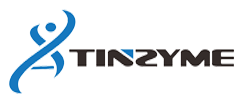
EVO Transfer, RNA
2024-10-18
TRANS2000 transfection reagent
2024-10-18EVO Transfer, DNA
Product Number: TR1812
Shipping and Storage
This product is transported at room temperature and stored for a long time at 4℃, with a validity period of 12 months.
This product is safe to use and no biological or chemical toxicity has been found. If accidentally contaminated, rinse with clean water.
Description
EVO Transfer, DNA is a nano polymer transfection reagent developed and synthesized by our company. This reagent is synthesized using nanotechnology and is a new generation of non viral transfection reagents. Due to the application of nanotechnology, EVO Transfer, DNA exhibits excellent low toxicity and high efficiency performance during cell transfection.This product is used for in vivo transfection of DNA.
Features
The method is simple and fast, with no obvious inflammatory response to animals, and is safe for operators.
Application
- In vivo studies of gene therapy in animals
- In vivo studies on RNA interference in animals
- In vivo study of protein function in animals
Related products
- TR1811: Used for in vivo transfection of RNA in animals.
- TR2000: Used to transfect long fragments of nucleic acid into cells.
- TR1000: Used to transfect short nucleic acids into cells.
